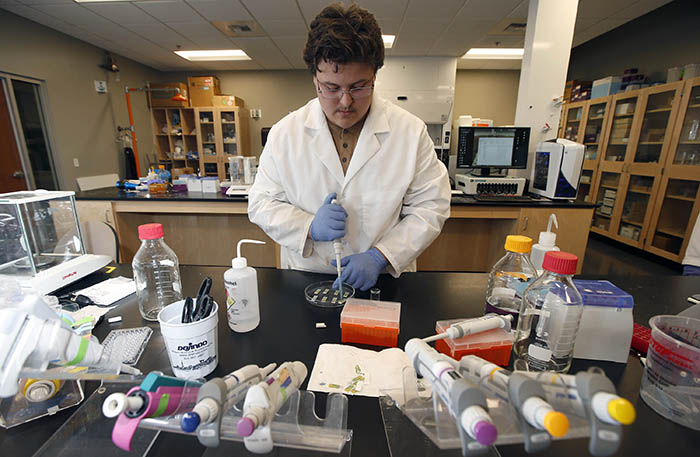
Editor's note: This is an excerpt from the cover story on Lopes Live Labs in the August 2021 issue of GCU Magazine. To view the digital version of the magazine, click here.
By Lana Sweeten-Shults
GCU Magazine
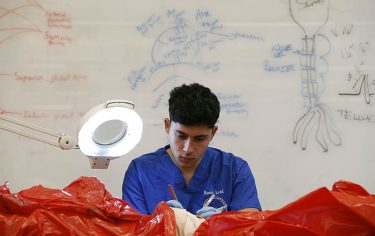
The College of Science, Engineering and Technology’s love affair with live learning spaces began with the cadaver labs, among Grand Canyon University's rock star science labs.
That made it only natural to build the engineering and technology programs with the same idea in mind.
“We thought, ‘What could we do for kids outside of the classroom setting that gives them experiences — that gives them knowledge as they pursue their own interests in the field?’” said the college’s dean, Dr. Mark Wooden.
What they did was something cutting edge.
They focused the design of those buildings on the Lopes Live Labs concept, peppering the 170,000-plus-square foot Engineering Building with everything from the machine-based engineering shops on the first floor — the Wood Working Shop and CNC Plasma Cutter and Welding Center, to name a couple — to a slew of other live teaching labs, such as the third-floor Circuits Lab and Electromagnetism & Optics Lab.
They applied the same lab-focused concept in the Technology Building, where students might dabble in a bit of live learning at the Cadaver Dissection or Exercise Science labs.
You won’t find many traditional lecture hall-type classrooms there or in the Natural Sciences Building, where another set of popular labs, the forensic science labs, are located. All three buildings reflect the college’s design principle. It’s a holistic teaching philosophy.
“We’re heavy on active learning — project-based learning, team-based learning,” said Wooden. “We don’t separate the doing from the learning; we want students to learn while they’re doing.”
In the Engineering Building alone, students ply through more than 4,000 square feet of shop space — open to every student on campus who wants to build something — and have access to $500,000 in tools and equipment to turn their concepts into prototypes.
“Really, these Lopes Live Labs are about providing kids opportunities to practice and explore their own interests outside of the classroom that is tied to what they’re studying,” said Wooden. “But even then, it doesn’t have to be tied to study. We have business students working in the machine shops who don’t want to be engineers. They want to build something and start businesses, so they come over and they tinker.”
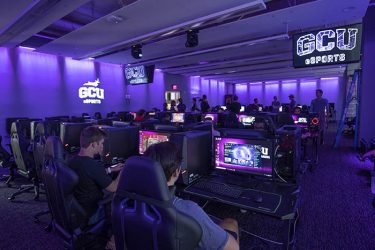
There’s more tinkering going on outside of the Engineering Building. Just take a jaunt over to the Technology Building. It’s where students, when they’re not diving into Fortnite in the Esports Arena and perhaps dreaming of a professional esports career, might take time out to hack a computer or crack a password in the controlled environment of the Cyber Center of Excellence, yet another of the college’s Lopes Live Labs.
The cyber center, where students get schooled in cybersecurity so they can fight virtual bad guys, is making a move this summer to the third floor of the Technology Building, an upgrade that comes complete with 44 new computers and a smattering of new servers, routers and switches.
Ask Dr. Brandy Harris, Assistant Dean of Technology, if other academic communities can tout anything quite like GCU’s cyber center.
“Not like this,” she said. “The fact that we have this amazing sandbox where students can come in and get hands-on hacking experience? Not a lot of places have that.”
Harris compares the facility to the anatomy labs, where students “get so excited because they get to do this really cool thing coming in as freshmen” and work with a cadaver.
“This is really similar, where they get to come in, immediately, and start applying skills in a very safe environment,” Harris said. “It’s just a way for them to get really excited and enthused about their content, and they’re building skills while they’re having fun.”
Not only do students get to network and explore the dark web — “It’s important for you as a cybersecurity expert to know,” said Khester Kendrick, Technology faculty member — but they also get to partner with industry, such as security intelligence company LogRhythm, which has its own security information and event management (SIEM) security software.
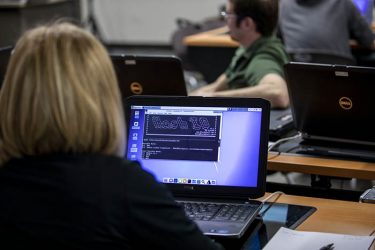
“Students will actually learn how to operate a real factory, up-to-date SIEM. Big organizations like AT&T and Cox, they have a SIEM. But you’re not going to get that at a normal university. Having a SIEM on campus? That’s huge,” Kendrick said.
What’s also huge for the college: its Research and Design Program, the flagship initiative that graphs and measures and control groups its way through those Lopes Live Labs perhaps more than any other program.
Launched in 2015 with five research groups, it now touts 11 such groups. About 300 students join Research and Design every year, said Associate Dean of Science Dr. Jon Valla, who directs the program, and it is open to any GCU student.
“We wanted to add to the advantages our students had in terms of applying to graduate school,” Valla said.
Unlike at other universities, where students might contribute to a doctoral student’s research, at GCU, “It’s not somebody’s work they’re taking part in. They’re designing their own research,” said Biology Professor and Research and Design mentor Dr. Ramesh Velupillaimani, whose students are researching whether certain Sonoran Desert plants exhibit medicinal benefits.
They’re also sharpening their critical thinking skills, presenting their research at conferences, rubbing shoulders with other scientists in the field — and getting their work published.
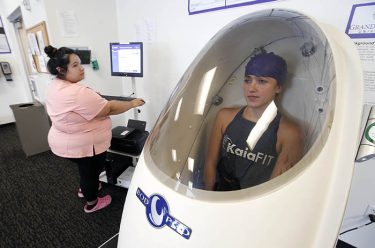
“As an undergraduate student, the thought that I would be the co-author on a paper? There’s no way,” said Exercise Science Professor Dr. Zach Zeigler, also a Research and Design mentor whose POWER Lab students (now alumni) co-authored a recently published paper about the impact of wildland firefighting on heart health. “But here, that’s the goal.”
Outside of Research and Design, Zeigler also advises students in the POWER Lab, the live learning space where the Student Wellness and Health Association runs the Health Information and Programming (HIP) Clinic. Students who receive referrals from the Canyon Health and Wellness Clinic can stop in so exercise science students can administer a VO2 max test for a cardiovascular health assessment, step into the BOD POD for a body fat analysis and go through a slew of other health assessments.
“That’s the hands-on experience,” Zeigler said. “Not just the research, which is nice for resumes, but they’re actually in the trenches providing this feedback, providing this good information.”
Michael Bodeen, faculty lead in human dissection, sees his Lopes Live Lab, the Cadaver Dissection Lab, much the same way Harris and Kendrick view the Cyber Center of Excellence: It’s one of those unique spaces you’ll only find at GCU.
It’s here where the students of the Mastering Anatomy Program, a multiyear mentoring initiative to prepare pre-health students for their specific professional interests, mad-dash their learning of the human body. They complete dissections while mastering various regions of the body, mentor fellow students and participate in Research and Design Program projects.
Bodeen said GCU’s cadaver lab is unique among universities because of the extensive level of involvement, education and training for undergraduates, such as the deep back dissection recently completed by the high school students he and his MAP students mentored as part of their community outreach.
Undergraduates, such as Brandon Hanes in the Biomedical Device Design Prototyping Lab, also can do the kind of industry-forward research usually entrusted only to graduate students.
Biomedical Engineering Professor Dr. Jeff La Belle, who is funded by the Helmsley Charitable Trust, conducts anywhere from five to 10 projects simultaneously in his lab, which occupies about 8,000 square feet of space in the Engineering Building. He also partners on a robotics team with Benchmark Electronics and helms his own robotics team.
“My projects stem from what my students are interested in,” said La Belle, who is focused on medical device design, prototyping and fabrication.
La Belle and the students he mentors aren’t doing canned experiments.
“They’re actually going out there and they have a problem to solve. I don’t have an answer, either. They have to actually discover that. What is the right answer? Whatever they come up with is the right answer. It’s a very real-world experience. It’s throwing them into the fire and letting it temper them.”
Hanes is more than happy to be thrown into the fire.
Like other students using these Lopes Live Labs, he hopes to connect with industry and impress potential employers with the hands on experience highlighted on his resume. But he also wants to make a difference.
For him, being able to work in a lab and contribute to research has been a “huge confidence-builder.”
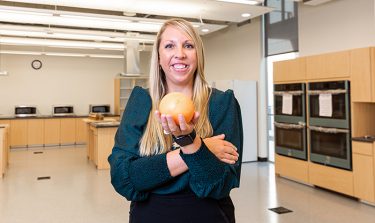
And students in the College of Science, Engineering and Technology will have even more confidence-building live learning labs to explore, such as the year-old Nutritional Sciences Lab and, on the horizon, a virtual reality/augmented reality exploration room, a proposed space where students at five stations will experience VR/AR through hands-on, interactive activities.
Hanes said of his lab experience, “Honestly, this is one place that I just feel like I’m home again.”
GCU senior writer Lana Sweeten-Shults can be reached at 602-639-7901 or at [email protected].
***
Related content:
GCU Magazine: Creative sparks fly in hands-on Lopes Live Labs
GCU Magazine: Canyon Ventures helps Lux Longboards keep rolling
GCU Magazine: Students treat students in bustling Orthopedic Clinic
GCU Magazine: New library, classroom set to create 'teacher leaders'
GCU Magazine: Lopes Live Labs offer hospitality, finance training
GCU Today: Anatomy duo muscles into distance learning
GCU Today: Nutritional Sciences program grows fast, adds lab
GCU Today: High schoolers with a heart for STEM intern at GCU
GCU Today: GCU researchers -- Don't skip that day of exercise















